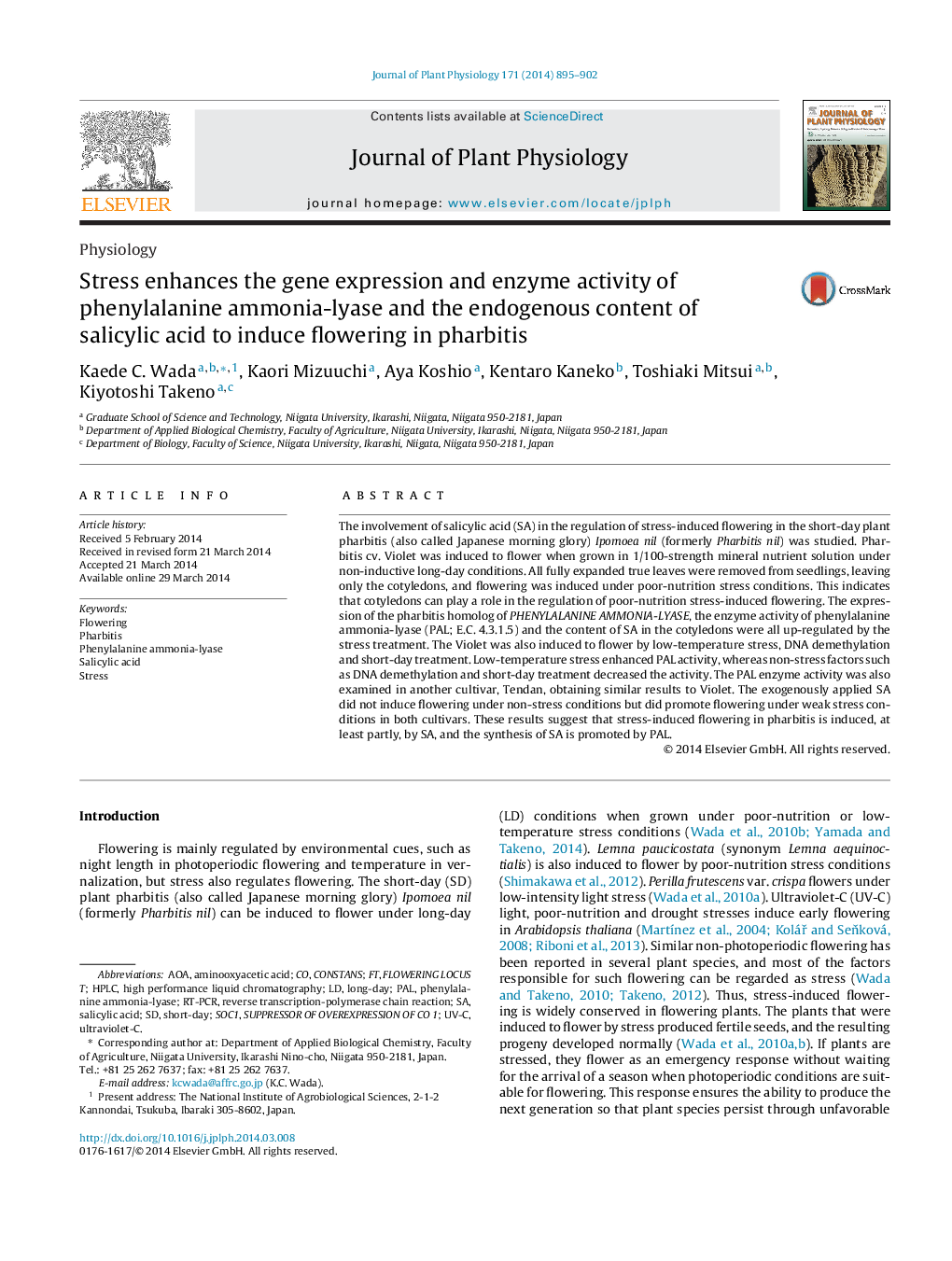| کد مقاله | کد نشریه | سال انتشار | مقاله انگلیسی | نسخه تمام متن |
|---|---|---|---|---|
| 2055935 | 1075790 | 2014 | 8 صفحه PDF | دانلود رایگان |
The involvement of salicylic acid (SA) in the regulation of stress-induced flowering in the short-day plant pharbitis (also called Japanese morning glory) Ipomoea nil (formerly Pharbitis nil) was studied. Pharbitis cv. Violet was induced to flower when grown in 1/100-strength mineral nutrient solution under non-inductive long-day conditions. All fully expanded true leaves were removed from seedlings, leaving only the cotyledons, and flowering was induced under poor-nutrition stress conditions. This indicates that cotyledons can play a role in the regulation of poor-nutrition stress-induced flowering. The expression of the pharbitis homolog of PHENYLALANINE AMMONIA-LYASE, the enzyme activity of phenylalanine ammonia-lyase (PAL; E.C. 4.3.1.5) and the content of SA in the cotyledons were all up-regulated by the stress treatment. The Violet was also induced to flower by low-temperature stress, DNA demethylation and short-day treatment. Low-temperature stress enhanced PAL activity, whereas non-stress factors such as DNA demethylation and short-day treatment decreased the activity. The PAL enzyme activity was also examined in another cultivar, Tendan, obtaining similar results to Violet. The exogenously applied SA did not induce flowering under non-stress conditions but did promote flowering under weak stress conditions in both cultivars. These results suggest that stress-induced flowering in pharbitis is induced, at least partly, by SA, and the synthesis of SA is promoted by PAL.
Journal: Journal of Plant Physiology - Volume 171, Issue 11, 1 July 2014, Pages 895–902
